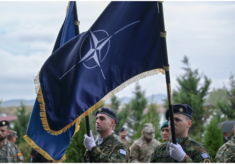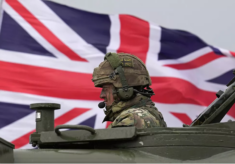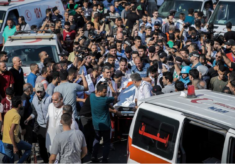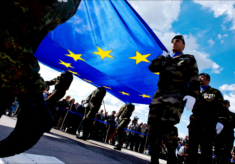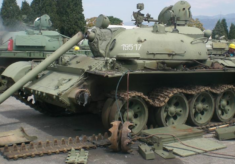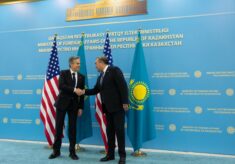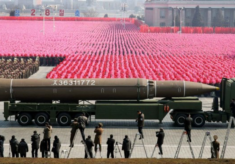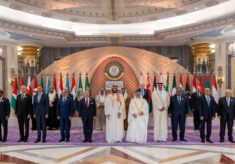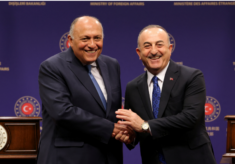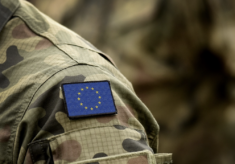CONFRONTING CRIMINAL/TERRORIST THREATS. The Reshaping Of Non-State Actors
9th and 10th December 2019
Closed Round Table
Integration of Counterterrorism and Countering Violent Extremism – Recommendations
The 10th of December the NDCF convened, under the auspices of the NATO Emerging Challenges Division Science for Peace and Security Programme, a closed round table on the integration of Counterterrorism and Countering Violent Extremism operations and activities[1]. The following points are the recommendations emerged from a fruitful debate.
The integration between CT and CVE at international and often at national level has been rather low. Good case studies exist (successful CVE initiatives in Aarhus in Denmark, Mechelen in Belgium, Los Angeles, EXIT and Hayat programmes in Germany and city programmes in Los Angeles), but good practices are insufficiently evaluated and disseminated. Apart from practical difficulties, political dynamics incline often more towards an active short-term use of force than in-depth pacification, extending overseas deployments at the expense of lives and treasury.
Integration is possible if an integrated approach is devised from the start. In principle NATO’s CT definition includes also prevention, although NATO’s operations do not run CVE activities. Since CT is of particular interest in the Southern Region, the cooperation with NATO’s MD and ICI partners on CT/CVE integration is essential as well as cooperation with the EU and UN.
Integration between these two domains can be illustrated considering them like activities in the energy sector. At upstream level countering violent extremism programmes are concentrated on the prevention of potential terrorist recruitment. Midstream is where counterterrorism comes to the fore, while CVE programmes continue to counter and disrupt terrorism recruitment narratives and actual recruitment with non-kinetic means. Downstream is the phase where CVE works on disengaging, rehabilitating and reintegrating terrorists that mostly are not in leadership positions or have not adopted a hard core attitude and behaviour.
The first and third level are clearly part of the national domain, where NATO can project stability with its specific strengths in training, education and interoperability of minds, especially with regards to building up and consolidating resilience in defence institutions.
Across the whole process the preservation of trust between different actors, local authorities and local society is essential to achieve maximum synergy and effectiveness. In essence this means that each actor is responsible for its own trustees and for not damaging the trust that local people place in another collaborating actor. It implies reciprocal respect for each specific operational boundary and avoiding counterproductive encroachments.
The midstream phase can be typically one where a NATO crisis management or cooperative security operation has started and where coordination between the NATO command, local authorities and other international bodies is more intense. Apart from military operational priorities, it is important to keep trust and narrative convergence between CVE, information warfare and propaganda, as well as a reasonably credible justice at local level.
All these activities take place in an international political-diplomatic environement that is conducive to success and a specific local political context that is decisive for the outcome of CT and CVE. Since the local level is decisive (beginning bottom up from local communities to central government), its overall consent is key in making the difference between time buying operations and decisive ones.
In any case an effective CT/CVE integration allows a reduction of popular hostility, a prevention of further intakes of terrorist recruits, a relative deterrent from war crimes and the exploitation of political weak spots within terrorist groups.
[1] NATO defines counterterrorism “All preventive, defensive and offensive measures taken to reduce the vulnerability of forces, individuals and property against terrorist threats and/or acts, to respond to terrorist acts. In the frame of the NATO Comprehensive Approach, this can be combined with or followed by measures enabling recovery after terrorist acts”. According to the European Commission definition “P/CVE can therefore be considered a broad umbrella term categorising activities that seek to prevent or mitigate violent extremism through various non-coercive measures united by the objective of counteracting the factors of violent extremism. P/CVE is widely understood to include, for instance, community debates on sensitive topics, media messaging, inter-faith and intra-faith dialogues, training of state governance and security actors, and a variety of initiatives with individuals deemed to be ‘at risk’ of joining or being attracted to violent extremist groups, such as vocational training and mentorship programmes”.


